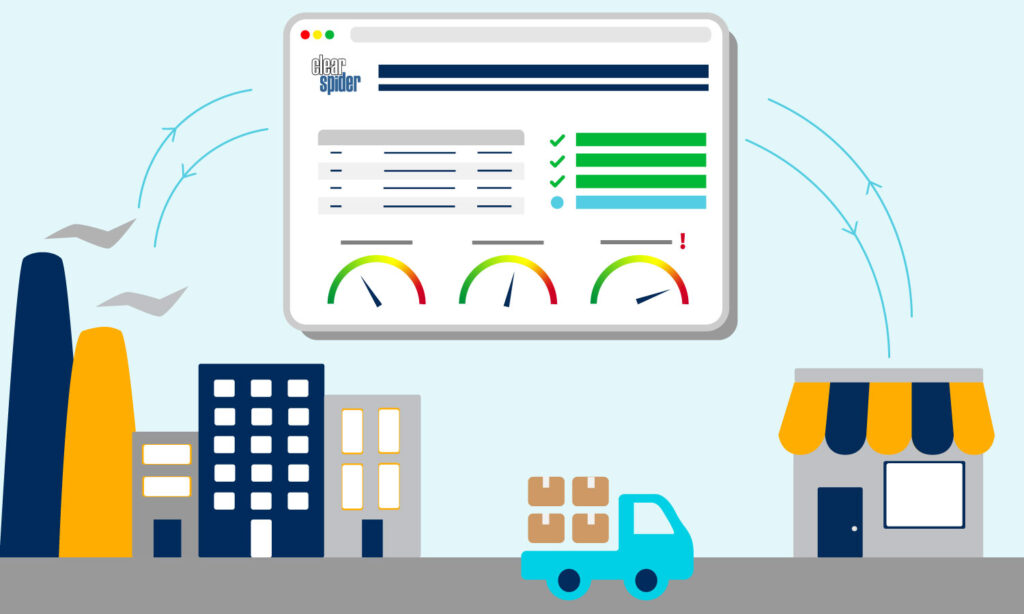Spooked by rising inflation and shrinking profit margins? You’re not alone. Unfortunately, recent inflation has made everything frighteningly more expensive. From raw materials to shipping and storage, businesses across the U.S. have been plagued with logistical nightmares.
After years of record-high inflation rates, the U.S. inflation rate has finally hit a three-year low at 2.5%. Now’s the time for businesses to look back at the strain that rising inflation put on their supply chains and inventory management. Protecting your bottom line starts with a better understanding of the ways inflation affects supply chain management.
In this blog, we’ll explain the impact of rising inflation rates on inventory and supply chain management. We’ll also outline the steps businesses should take to inflation-proof their supply chains.
Spoiler: Effective inventory management strategies are key to navigating price hikes without passing excessive costs onto consumers.
How Inflation Impacts Supply Chain Management
Low and predictable levels of inflation are a sign of a healthy economy. The most recent surge in inflation, however, surpassed these manageable levels and had significant negative impacts on global economies. As prices continued to rise, purchasing power plummeted. This ultimately means that companies struggled to maintain cost efficiency and operational stability.
Inflation, particularly since the COVID-19 pandemic, has driven up the costs of goods and services. As the backbone of all businesses, supply chain management was hit especially hard. Increased costs are passed along the supply chain from raw materials to finished goods, resulting in several significant challenges.
Higher Production Costs:
Raw material prices have surged, increasing the overall cost of production. For instance, the price of commodities like steel, oil, and agricultural products has increased. This has forced many manufacturers to reevaluate their sourcing and pricing strategies.
Transportation Expenses:
Logistics costs, especially fuel prices, have skyrocketed. Coupled with labor shortages, this has led to delays in shipping and deliveries. Increased lead time plus increased shipping costs means that customer satisfaction also takes a hit.
Supplier Disruption:
Inflation has disrupted global supplier networks, forcing businesses to either look for alternative suppliers or to negotiate new contracts. Suppliers have been struggling with managing increased costs of materials which has led to increased costs for customers, failure to meet production demands, or reduced quality of goods.
Currency Fluctuations:
As inflation varies by region, currency fluctuations further complicate international trade. This directly impacts companies that rely on global supply chains and makes it difficult to predict costs and maintain price stability.
Inflation-Proofing Your Supply Chain
Regardless of inflation rates, businesses need powerful and effective inventory management to succeed. However, during periods of high inflation, optimizing inventory levels becomes especially difficult.
Weighing the rising costs of goods against the risk of costly stockouts is a significant challenge for supply chain operators. Under these conditions, effective inventory management is no longer just beneficial. It becomes essential in creating supply chains that can survive high inflation.
Is Your Supply Chain Inflation-Proof?
Lean Inventory Models
As inflation pushes prices upward, the cost of holding inventory has increased. Higher storage fees, interest rates, and insurance premiums make a shift toward leaner inventory models necessary to stay profitable.
Data-Driven Forecasting
Inflation causes shifts in consumer purchasing behavior , often leading to fluctuations in demand. This makes accurate forecasting more challenging, as businesses struggle to predict when consumers will buy and in what quantities. Incorrect forecasts can result in costly excess stock or, conversely, stockouts that disrupt the flow of goods.
Purchasing Power Protected
As inflation diminishes purchasing power, both businesses and consumers are buying less or switching to cheaper alternatives. Protect your purchasing power by adjusting your pricing strategies and carefully managing inventory to avoid being stuck with unsellable goods.
Optimized On-Hand Inventory Levels
The just-in-time inventory model focuses on reducing inventory holding costs by receiving goods only as needed. It is particularly vulnerable to the pressures of high inflation. This is because, as we’ve mentioned above, supply chain disruptions have made it more difficult to ensure timely deliveries. The unfortunate outcomes range from production halts to order fulfillment issues to missed sales opportunities.
Start Building an Inflation-Proof Supply Chain
Talk to our Experts!
Protect your Purchasing Power with Powerful Inventory Management
Inflation erodes purchasing power for both businesses and customers. In supply chain management, as inflation makes everything more expensive, businesses struggle to have enough available capital for procurement. As suppliers increase their prices to offset inflation, businesses are forced to either absorb these additional costs or pass them on to customers. This limits a business’s ability to negotiate favorable contracts. Unfortunately for customers, this usually leads to increased costs and decreased quality of goods.
How To: Build a Responsive Supply Chain
So, what’s the difference between the businesses that survive supply chain disruptions and those that don’t? Effective inventory management. In today’s world, a responsive supply chain isn’t just a cost-saving strategy. It’s an essential component of businesses that are able to survive during periods of economic uncertainty.
Inflation rates are dynamic, they’re always changing. Consequently, supply chain disruptions are inevitable. How, then, do businesses start building a responsive supply chain?
Step 1: Become adaptable.
Align your inventory strategies with market trends and consumer behavior insights. This will allow your business to remain profitable without affecting customer satisfaction. This strengthens brand loyalty because it proves to your customers that your business can manage market uncertainties.
Step 2: Diversify your suppliers.
In order to keep your business afloat, you need to reduce costs and minimize supply chain disruptions. Instead of relying on a single supplier, it’s best to secure a mix of local and international sources. This reduces the effect of international currency fluctuations on your prices and gives you more leverage for negotiating favorable contracts.
Step 3: Invest in a powerful inventory management system.
Optimized inventory levels and streamlined inventory processes are essential for your business’s financial success. To overcome the inventory challenges created by rising inflation, you need to implement a powerful, cloud-based inventory management system such as Clear Spider.
Below we’ve outlined Clear Spider’s top 4 inventory management solutions that will protect your bottom line.
Top 4 Inventory Management Solutions
Clear Spider’s VMI system is a strategic partnership between suppliers and customers. Tracking inventory in real time maintains the correct flow of inventory from one end of a supply chain to the other. VMI allows vendors to stay focused on inventory goals while customers focus on their customer service and brand loyalty.
Leverage Clear Spider’s powerful technology to automatically create new purchase orders (PO) each time a customer’s inventory levels reach preset reorder points. This reduces replenishment response time, labor costs and data entry errors that are common with manual POs. Also, use demand-driven data to determine optimal reorder points to avoid over- or under-stocking and reduce holding costs.
Efficient supply chains start in the warehouse. It’s important to know how your inventory is consumed at each of your warehouse locations. This allows you to coordinate and optimize warehouse operations.
Clear Spider provides a connected solution that keeps all logistics processes in sync and running smoothly. It integrates your inventory management solutions with your shipping, accounting, and ERP systems.
Clear Spider’s highly flexible system integrates with any software on the cloud. Accounting, e-commerce, shipping, ERP, and CRM systems all integrate into one system to ensure full visibility of your entire supply chain.
Conclusion
High inflation exposed businesses to significant supply chain disruptions over the last few years. This impacted everything from procurement to inventory management to purchasing power and pricing strategies. How can you turn your logistical nightmares into supply chain success? With the power of Clear Spider’s inventory management solutions.






